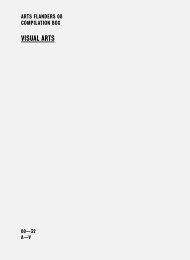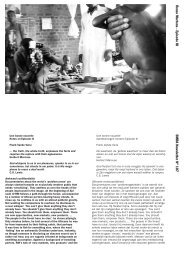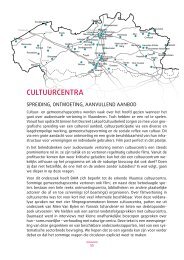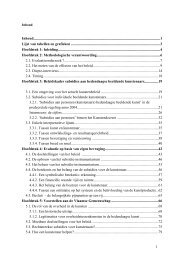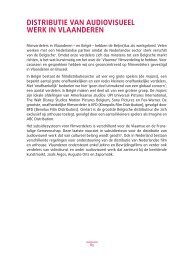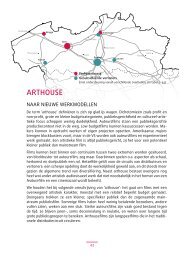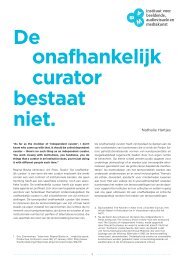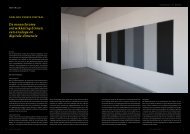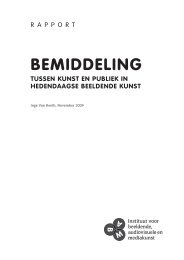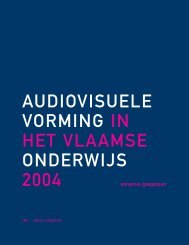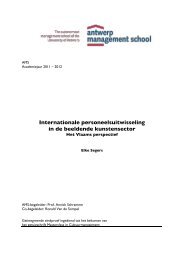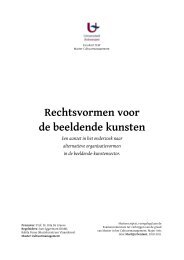MEDIA DIGITAL ART AND CULTURE IN FLANDERS BELGIUM - BAM
MEDIA DIGITAL ART AND CULTURE IN FLANDERS BELGIUM - BAM
MEDIA DIGITAL ART AND CULTURE IN FLANDERS BELGIUM - BAM
Create successful ePaper yourself
Turn your PDF publications into a flip-book with our unique Google optimized e-Paper software.
N O E X T E R I O R<br />
Asselberghs demonstrates the absence of the exterior in a globalized and<br />
mediatized world. He has done this before in collaboration with Johan<br />
Grimonprez (1962), an artist who demonstrates the ways in which mass<br />
media infiltrate our lives and determine the course of history (Dial H.I.S.T.O.R.Y,<br />
1997; Double Take, 2009). As a frequent lecturer, the influence of Asselberghs<br />
is noticeable in the work of a new generation of Belgian artists (or anti film<br />
makers, as Asselberghs tends to call them) such as Pieter Geenen (1979) who<br />
travels to border regions between Europe and Africa, Greek and Turkish Cyprus<br />
or the Republic of Congo and Rwanda by means of sound, video and slide<br />
installations such as nocturne, nostalgia or scènes troublées.<br />
This absence of the exterior is also widely demonstrated by the Brusselsbased<br />
Dutch artist Renzo Martens (1973). In 2009 Martens travelled, in search<br />
of himself, to the by war divided Chechen Republic. This resulted in the film<br />
Episode 1. The artist explicitly chooses a heavily mediatized war zone, hoping to<br />
meet the professional viewers (journalists, politicians, development-aid workers<br />
and other analysts) to tell him who he is or how he feels. In Episode 3 or Enjoy<br />
Poverty he travels to the Republic of Congo, which has been plagued by war,<br />
hunger and exploitation. With this film Martens demonstrated the complete<br />
absence of the exterior. There is no exterior for a Western European like<br />
himself, who takes the plane to eastern Congo in order to make a film in which<br />
he is constantly on screen. Even the Congolese people have no exterior, as in<br />
nowhere to go. This definitely applies to the viewer as well, who is constantly<br />
being confronted with his own involvement in the situation presented onscreen.<br />
There is no exterior. We are always in the middle of it. Complete<br />
immersion. Complete media art.<br />
F L A N D E R S ?<br />
When the notion of the exterior is no longer an option, when everything and<br />
everyone is always part of the globalized and mediatized world in which we live,<br />
what could Flanders’ role for media art possibly be? In order to find out, we visit<br />
Brussels: a shared, if not divided city. Brussels is not only the capital of Flanders,<br />
but also that of Belgium and Europe. In this city, in the centre of this nation,<br />
which is constantly moving, this old world that forces itself to collaborate, we<br />
discover a unique biotope of organizations involved in media art. In the shadow<br />
of the 20th century archaic institutions is a completely new kind of 21st century<br />
hybrid organizations located. Organic and anti-institutional.<br />
1 8



